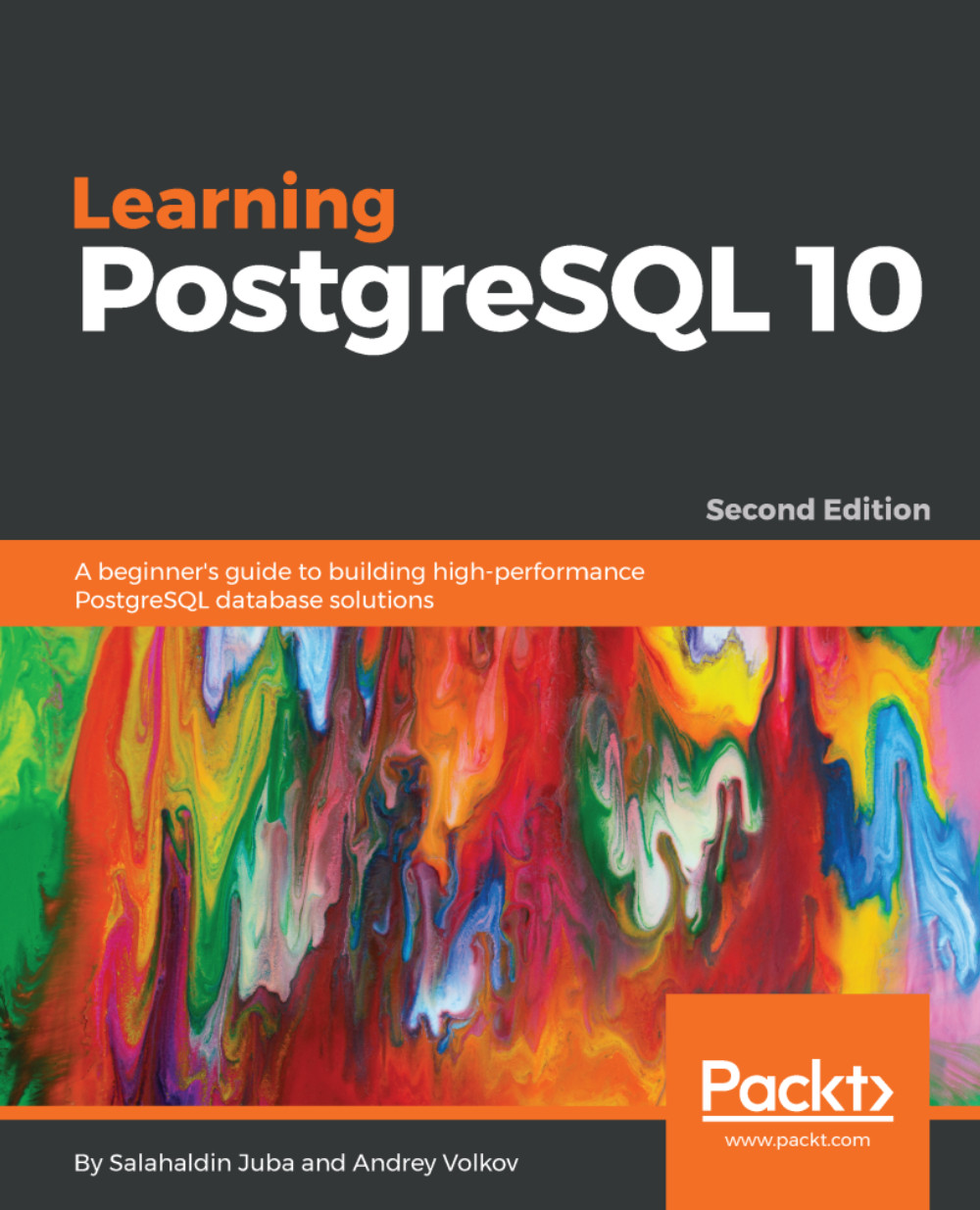Overview of this book
PostgreSQL is one of the most popular open source databases in the world, supporting the most advanced features included in SQL standards. This book will familiarize you with the latest features released in PostgreSQL 10.
We’ll start with a thorough introduction to PostgreSQL and the new features introduced in PostgreSQL 10. We’ll cover the Data Definition Language (DDL) with an emphasis on PostgreSQL, and the common DDL commands supported by ANSI SQL. You’ll learn to create tables, define integrity constraints, build indexes, and set up views and other schema objects. Moving on, we’ll cover the concepts of Data Manipulation Language (DML) and PostgreSQL server-side programming capabilities using PL/pgSQL. We’ll also explore the NoSQL capabilities of PostgreSQL and connect to your PostgreSQL database to manipulate data objects.
By the end of this book, you’ll have a thorough understanding of the basics of PostgreSQL 10 and will have the necessary skills to build efficient database solutions.



 Free Chapter
Free Chapter

